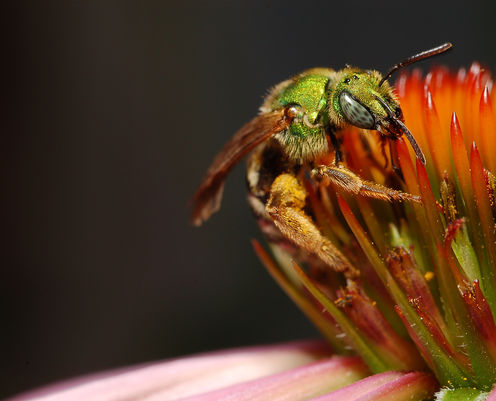By Hank Campbell | March 18th 2021 @ Science 2.0| Print | E-mail
The latest numbers on honeybee colonies have been released
by the U.S. Department of Agriculture and they show that the
Beepocalypse we keep being warned about has been postponed for another
year.
Instead of going extinct, as activist fundraising campaigns
assured us would happen unless efficient targeted seed treatments were
replaced by mass spraying of plants with antiquated pesticides still
certified "organic", bees are doing great. The only fluctuations are
"statistical wobble" that can happen any time - or due to economics.
Honey production was down in 2020, like every sector of the economy
except government, and that could have impacted some businesses more
than others. Alabama had 7,000 colonies in 2019 and 7,000 in 2020.
California had 335,000 in 2019 and 320,000 in 2020, but many of those
bees "travel" and there was a lot less of that last year.
Overall,
the change was under 4 percent. That is what I mean about statistical
wobble. There is no mass die-off, no colony collapse disorder, no
beepocalypse yet again. While it could be just the usual variation in
nature, more likely is that there was less demand for honey last year,
and if bees are not making money, they cost money. So the ones that died
each month may not have been replaced as companies went out of business
like so many companies did. With 40 million pounds of honey just
sitting around by the end of 2020, there was certainly no reason to
increase bee numbers.

Instead of dying out, there are now 10 honeybees for every human on the planet - more than 25 years ago. And that is just in one species. There are over 25,000 species of bees, we just don't try to count them all because the others are not part of a billion dollar industry, like sending honeybees around in trucks to pollinate almond farms.
It is entirely human to find or even create cause-and-effect, to want to fix a problem, but the last round of 'bees are dying' hysteria was instead mercenary. Activists whose annual revenue totals $2 billion turned on agricultural science yet again, but this time they turned on products that were created after the last round of bee hysteria - a class of pesticides called neonicotinoids.
If neonicotinoids sound like neo-nicotine, there is a reason. They are chemically similar to all-natural nicotine, which insects hate but are no problem for everything else. Because they can be applied to seeds, and in the early stages are when plants are most vulnerable to pests, they are more efficient at crop protection. That means less mass spraying or chance of insecticide drift.
But environmental activists are essentially Cultural Vampires. No one is born being anti-science, such vampires cannot reproduce, so they must groom and seduce the gullible to add to their ranks. That means they must constantly create new doomsday prophecies. Greenpeace is all about global warming and pesticides now because they'd be out of business if their focus was still opposing nuclear energy or hunting whales.
The reality is bee numbers are hard to predict and yet in 2005 and since we let activists and their allies in journalism declare cause and effect despite the data. A neighbor of mine took up beekeeping last spring. I told him to be prepared to feed them for months but instead they took to their new home right away. He was getting lots of honey. He used science to prevent pests like the big killer of bees, varroa mites, he checked off the all boxes. Then suddenly this winter they were gone. They didn't die, at least not in the hive, they simply left.
Where did they go? I have no idea, but I know they are all dead now because that is nature. Yet colonies are healthier than they have been in decades. There are actually more than before neonicotinoids were invented.
That's an awkward fact for environmental lawyers but it is great for the rest of us.
No comments:
Post a Comment